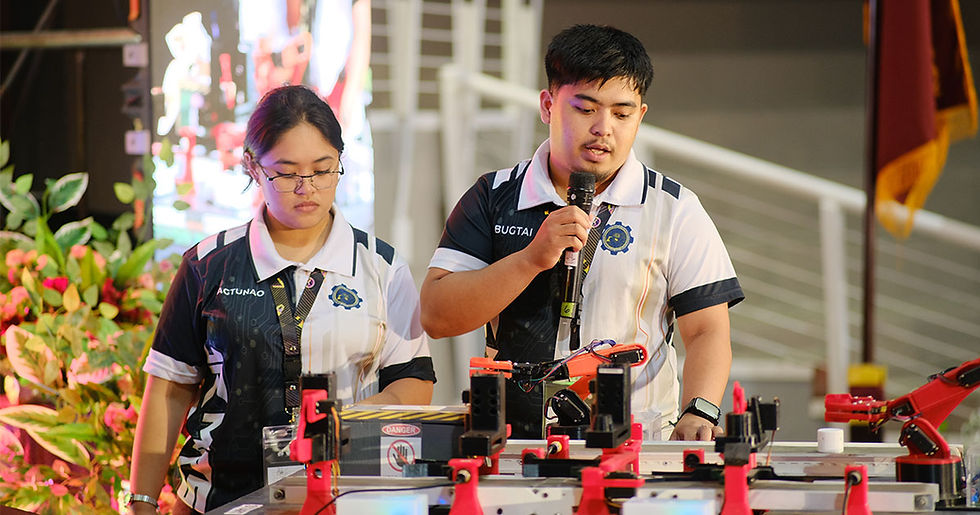Field Ready’s deep commitment to learning
- Field Ready

- Aug 14, 2020
- 4 min read
Updated: Aug 18, 2020
Learning - and sharing knowledge - is at the core of what Field Ready is and does. Constantly evolving environments, the introduction of new technology, the demands of different stakeholders and the rapid pace of change requires us to understand and act in ways that are both data-driven and rely on experts' tacit knowledge in a diverse range of fields.
There are two main ways we learn - internally and externally. Within Field Ready, we focus on being a learning organization; outside the organization our focus is on sharing, capacity building and thought leadership.

A Learning Organization
A learning organization is one that facilitates its members' learning and continuously transforms itself. The concept was developed by Peter Senge and his colleagues at the Massachusetts Institute of Technology based on studies of how organizations develop as a result of different challenges. While not a new concept, it's still helpful to consider. Field Ready fits the five characteristics Senge outlines in his book The Fifth Discipline - systems thinking, team members' personal mastery, the use of mental models, shared vision and team learning. Here are some of the practical ways we embody these practices:
1) Individualized staff training: Field Ready’s staff are curious people who naturally seek professional improvement. We offer a number of ways for team members to learn. Here’s a few examples: An experienced engineer recently completed certification provided by FabLab. An administrative officer attended a workshop on the prevention of sexual exploitation and abuse (PSEA) offered by UNICEF. And other team members – an engineer and a logistics officer – completed assessment, monitoring and evaluation sessions available through the DisasterReady portal.
2) Team training: Learning as a group is vital. A main way this occurs is by building our capacity to respond to rapid-onset disasters. New members of our rapid emergency deployment team - who make up our surge roster to respond to sudden-onset disasters - undergo in-depth training. This requires months of distance learning and then an intensive three-day resident experience that includes team-building, simulation and other interactive sessions.
3) Knowledge Sharing: Internally, we regularly hold sessions to exchange hard-earned know-how, experiences and lessons learned on all the projects we work on. We call these exchanges "Tales From The Field" and frequently invite outside guests as both presenters and part of the audience.
Have a "Field Day"
All staff are encouraged to regularly visit program sites, talk to end-users and fully understand - with empathy - on-the-ground situations. This involves "getting out of the building" to really comprehend the realities underway and learn from those most affected, ensuring the work we do is meaningful and has impact. Here's how we do it:
Step 1: Find out more Spend a day observing, asking questions, building rapport, listening, participating and - above all - having empathy.
Sample for interviewing an aid worker:
1. What's your job title? How long have you worked here and in this industry? Please describe the roles you’ve had.
2. Did you receive formal or informal training that prepared you to work in this field? If yes, please describe.
3. As you conduct your work, what are the three things that are most “top of mind” for you on a daily basis? Why?
4. Are there basic things that have to be in place for you to do your work (shelter, power, transportation, etc.), or does it depend on the situation? Please describe.
5. What methods do you use to identify challenges and solve them?
6. Describe a short-term issue that you (or you and your team) had to tackle and how you solved it.
Step 2: Document Everything Identify which parts to make.
1. Sketches and photos/video - Close-up and whole system, overall environment, GPS data, hand-to-scale, include detail such as brand names, part numbers, symbols, material IDs
2. Measurements and any other specifications
3. Ancillary details including anything already existing
Step 3: Prioritize…At the end of day, you should:
· Show gratitude, say "thank you" and be clear about next steps (manage expectations and never promise)
· Consider any questions that haven’t been answered
· Talk to the team, get consensus on key issues, consider taking a poll, using a "pros" and "cons" list or a "difficulty vs. importance" matrix such as the one below.
A good partner increasing capacity worldwide
Sharing knowledge requires mastery, and Field Ready team members routinely pass on what they know to our partners of various stripes. Each year, we train hundreds of people on topics ranging from design to manufacturing techniques.
We also share information through an active agenda of presentations, written work and conference attendance. Examples include a host of gatherings in the aid sector (e.g., World Humanitarian Summit, InterAction Forum, USAID Innovation Week, etc.), events covering innovation (e.g., the Global Innovation Gathering, MakerFaire, etc.) and technical topics (e.g., engineering and health-focused sectoral meetings), as well as special events such as TED and TEDx. We also use social media extensively (including videos and the well-known platforms) as well as other avenues such as peer-reviewed journal articles.
Field Ready makes a point to document what we do in writing by sharing reports on various platforms (e.g., on Medium and on ReliefWeb). We also produce our own Technical Briefs which serve as white papers. In 2018, we also published a full-length book about innovation in the aid sector – published by the leading group in this area, Practical Action – titled Managing Humanitarian Innovation: The Cutting Edge of Aid.

_edited.png)








Comments